As a horticulturalist, I predict food forests are going to be the sustainable gardening trend of 2026
Discover how you can incorporate a food forest into your garden and grow more fruit, herbs and vegetables
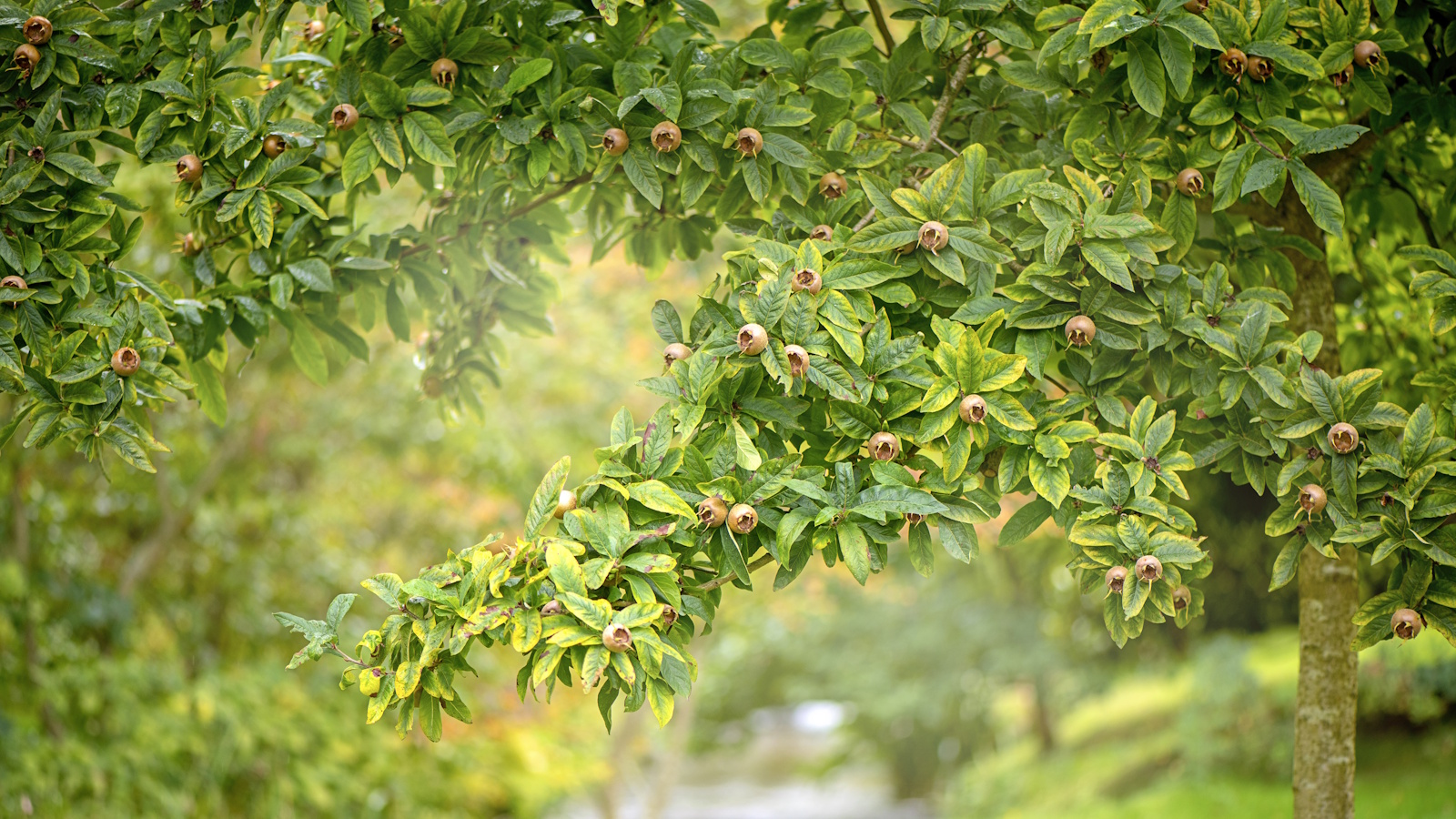

In the face of rising global temperatures and climate change, gardeners and homeowners are increasingly looking at ways of making their gardens more sustainable. From drought-tolerant planting to focusing on organic methods, there are many ways we can each play our part.
But what about food forests or forest gardens, as they are also known? Briefly described as the mixed planting of mainly edible trees, shrubs and plants that mimic a natural woodland and its ecosystems, food forests aim to be not only productive but sustainable and also increase biodiversity.
From forest garden ideas to how to create a food forest and why, we’ll discuss the benefits and key principles of this ecologically friendly concept and why I expect it to increase in popularity with home gardeners.
Food forests – a sustainable way of growing
Living in a fast-paced world, time-poor gardeners are often searching for labor-saving ways to maintain their gardens, but still do their bit for climate change.
Installing irrigation systems and low-maintenance planting are two great ways to help achieve this, but what if there was a different way of growing?
Read on to discover how food forests aim to emulate the natural world and provide healthy and delicious produce with minimal intervention.
What is a food forest?
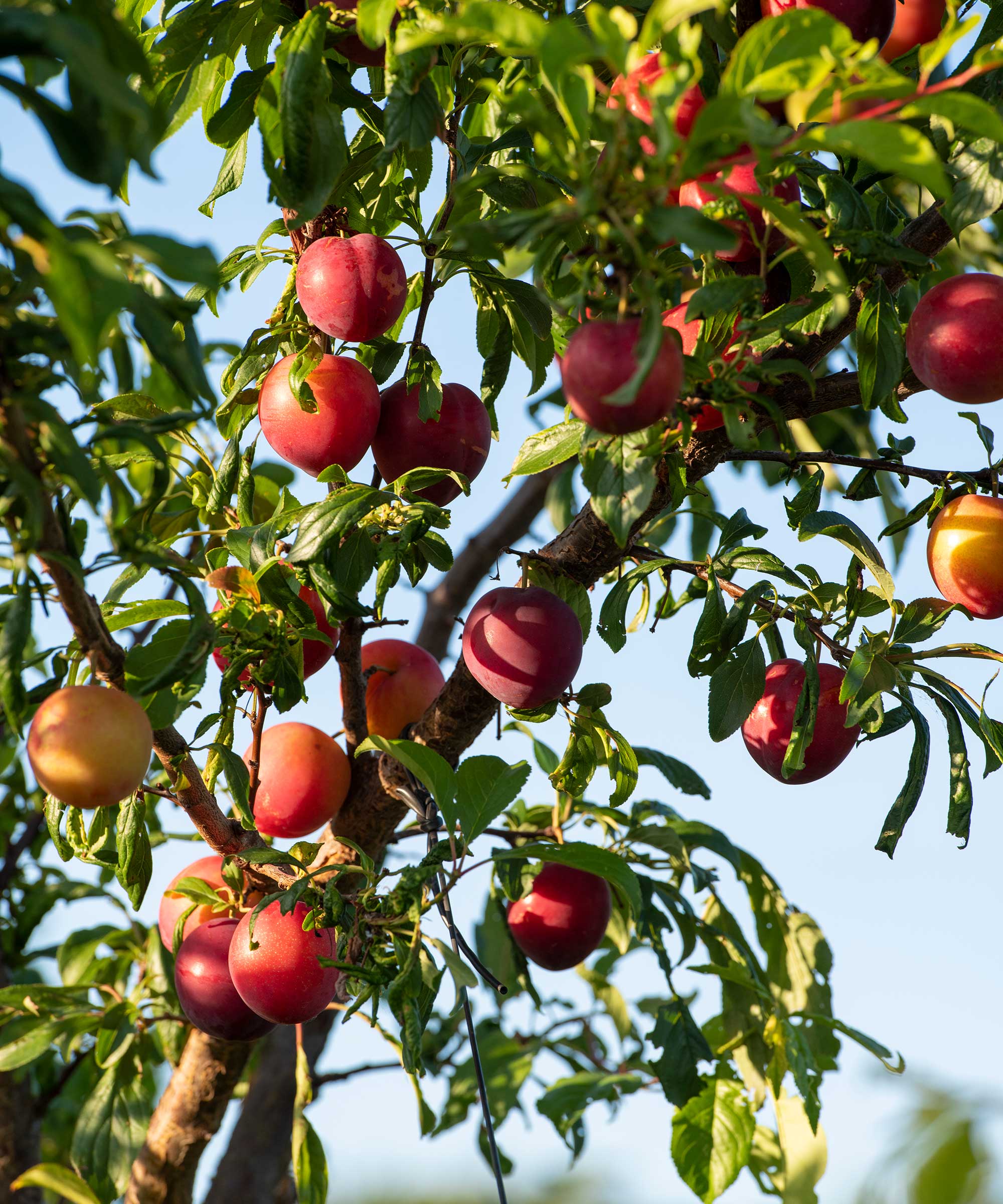
A food forest, or a forest garden, is essentially a system of growing edimentals in different layers emulating a forest rather than rows of monoculture crops. Generally based on seven specific layers that replicate a natural woodland structure from the canopy down to ground level, forest gardens include trees, shrubs, herbaceous perennials, annuals, groundcover plants, climbers and root crops.
Design expertise in your inbox – from inspiring decorating ideas and beautiful celebrity homes to practical gardening advice and shopping round-ups.
However, some food forests also include an eighth layer for growing fungi, supplementary to any existing fungi already present in the soil and a ninth layer for an aquatic or wetland layer.
The layers of a food forest
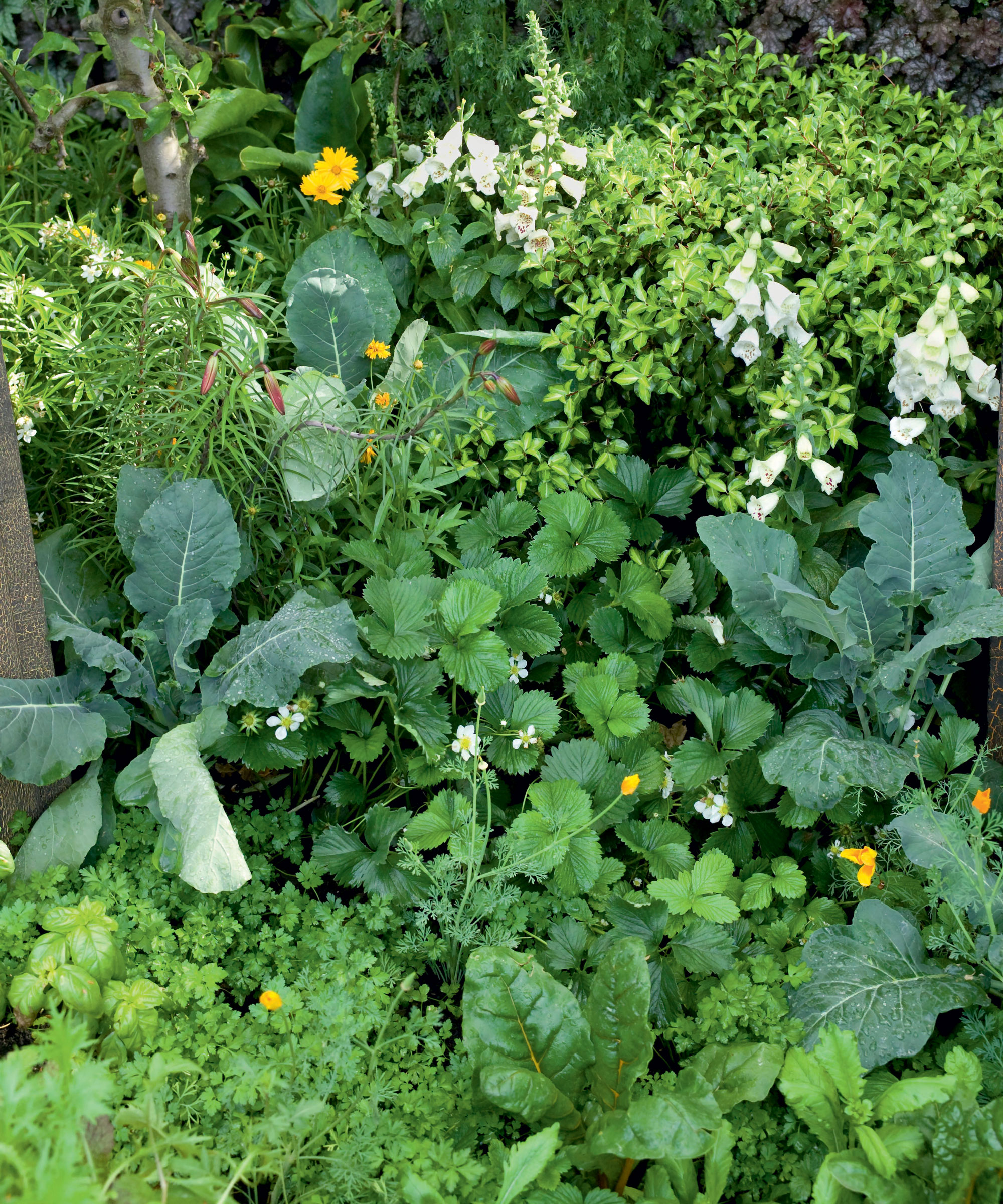
One advantage of food forests is that they don’t just focus on lateral space, but encompass vertical gardening as well, which means even the smallest of spaces can prove productive.
Tall tree or canopy layer
The tallest tier in the food forest, which consists of fruit and nut trees, such as chestnut (Castanea) and apple (Malus domestica) and pear (Pyrus) standards around 30 feet tall or more when mature. The canopy layer provides shade and protection for the plants below and habitats for birds.
Sub-canopy layer
Sitting below the canopy, the sub-canopy typically consists of smaller fruit and nut trees ranging from 10-25 feet tall that are grown on dwarf or semi-dwarf rootstocks. These often include almonds (Prunus dulcis), medlars (Mespilus germanica), mulberries (Morus) and nectarines (Prunus persica var. nectarina).
Shrub layer
The shrub story is often highly productive and tends to include blueberries (Vaccinium), raspberries (Rubus idaeus), hazelnuts (Corylus), along with other nitrogen-fixing shrubs like Siberian pea shrub (Caragana arborescens), sea buckthorn (Hippophae rhamnoides) and alders (Alnus sp.)
Herbaceous layer
Unlike the woody shrubs and trees forming the layers above, the plants in the herbaceous layer generally die back in the winter and regrow the following spring. Often consisting of perennials like asparagus (Asparagus officinalis), Jerusalem artichokes (Helianthus tuberosus) and rhubarb (Rheum rhabarbarum) and self-seeding annual vegetables such as chard (Beta vulgaris subsp. cicla), kale (Brassica oleracea var. acephala) and even tomatoes (Solanum lycopersicum). The herbaceous layer is also where you might find herbs and medicinal plants such as chamomile (Chamaemelum nobile), chives ( Allium schoenoprasum) and mint (Mentha).
Ground cover layer
Lower-growing than the herbaceous layer, the ground cover layer helps suppress any weeds and is comprised of plants that happily sprawl over any bare ground and don’t mind a bit of shade. Examples of plants that might thrive in the ground cover layer include nasturtiums (Tropaeolum) with their edible flowers and leaves and strawberries (Fragaria).
Underground layer
Often crossing over with the herbaceous layer, the underground or root crop layer is generally used to grow plants such as garlic (Allium sativum), ginger (Zingiber officinale), leeks (Allium), onions (Allium cepa) and dahlias (Dahlia).
Climber layer
Vertical gardening within a food forest provides even more space for productivity. Crops typically grown in this layer include climbing beans (Phaseolus vulgaris), cucumbers (Cucumis sativus), kiwis (Actinidia) and grapes (Vitis).
The benefits of food forests
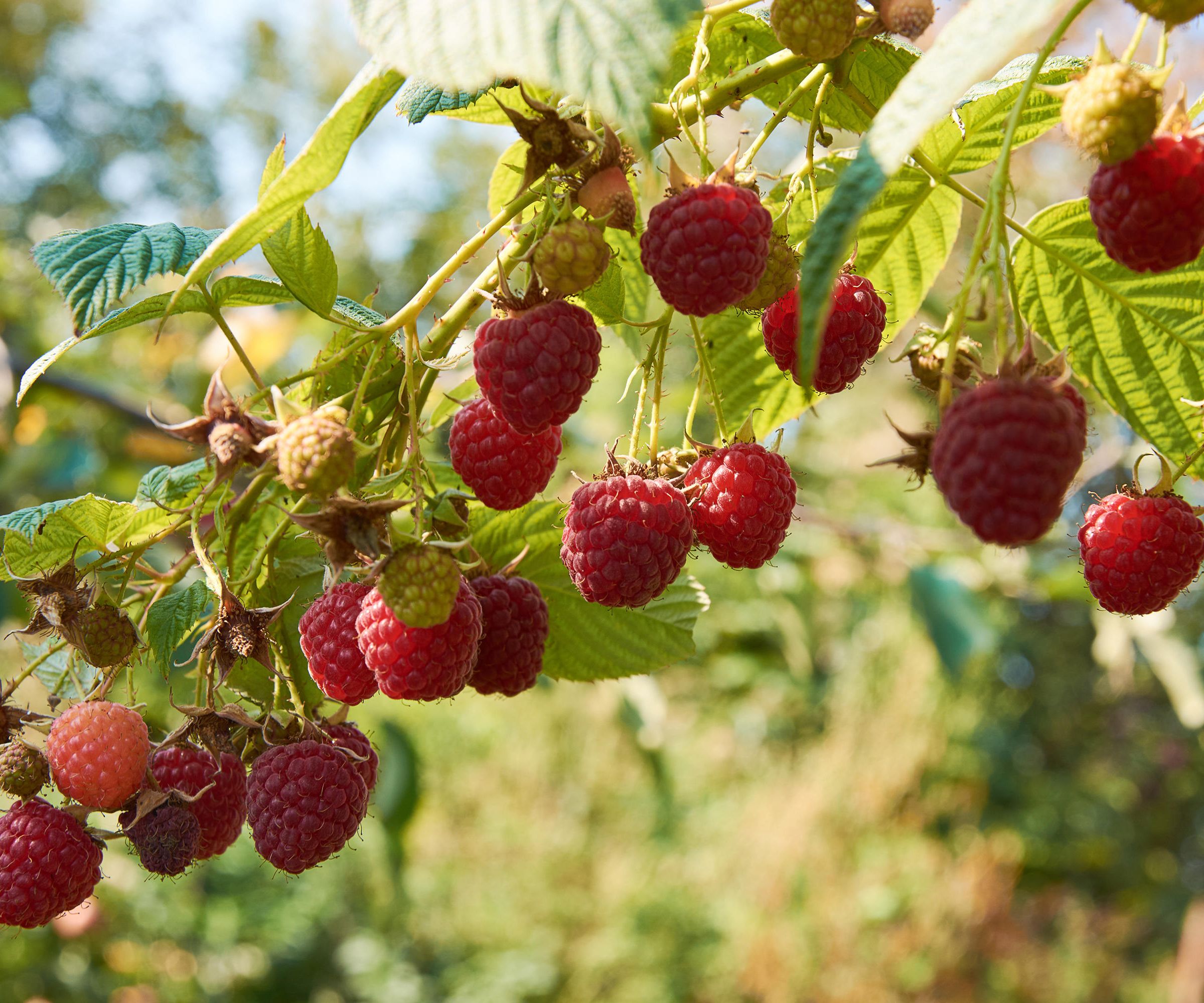
Designed to benefit the natural world as well as being productive, food forests have many attractive advantages, especially in the face of climate change.
Firstly, food forests are intended to be sustainable for the long term as they consist mainly of perennial plants that will return year after year. This means that not only can they save you the time and labor of replanting every season, but the cost of annually replacing plants. Furthermore, by growing predominantly perennials, you are saving water by not having to regularly irrigate new plantings each season.
An additional benefit of planting a food forest is that you are also creating a habitat that will support a diverse range of wildlife. For example, the trees, flowers and food produced will help support and entice birds, pollinators and even small mammals.
Furthermore, and especially of interest to those of us with less time on our hands than we would like, is that food forests are generally low-maintenance. For example, minimal weeding is required because the ground cover layer tends not to leave any bare patches of soil for weeds to germinate and take over and once established, the forest garden becomes self-sustaining and requires little if, no irrigation.
However, to keep your food forest performing well, some pruning to maintain it and mulching to help lock in moisture and boost soil health will be needed.
In the community, food forests provide space for learning and social interaction and like a wellness garden, can provide opportunities for improving well-being as well.
How to incorporate a food forest into your garden
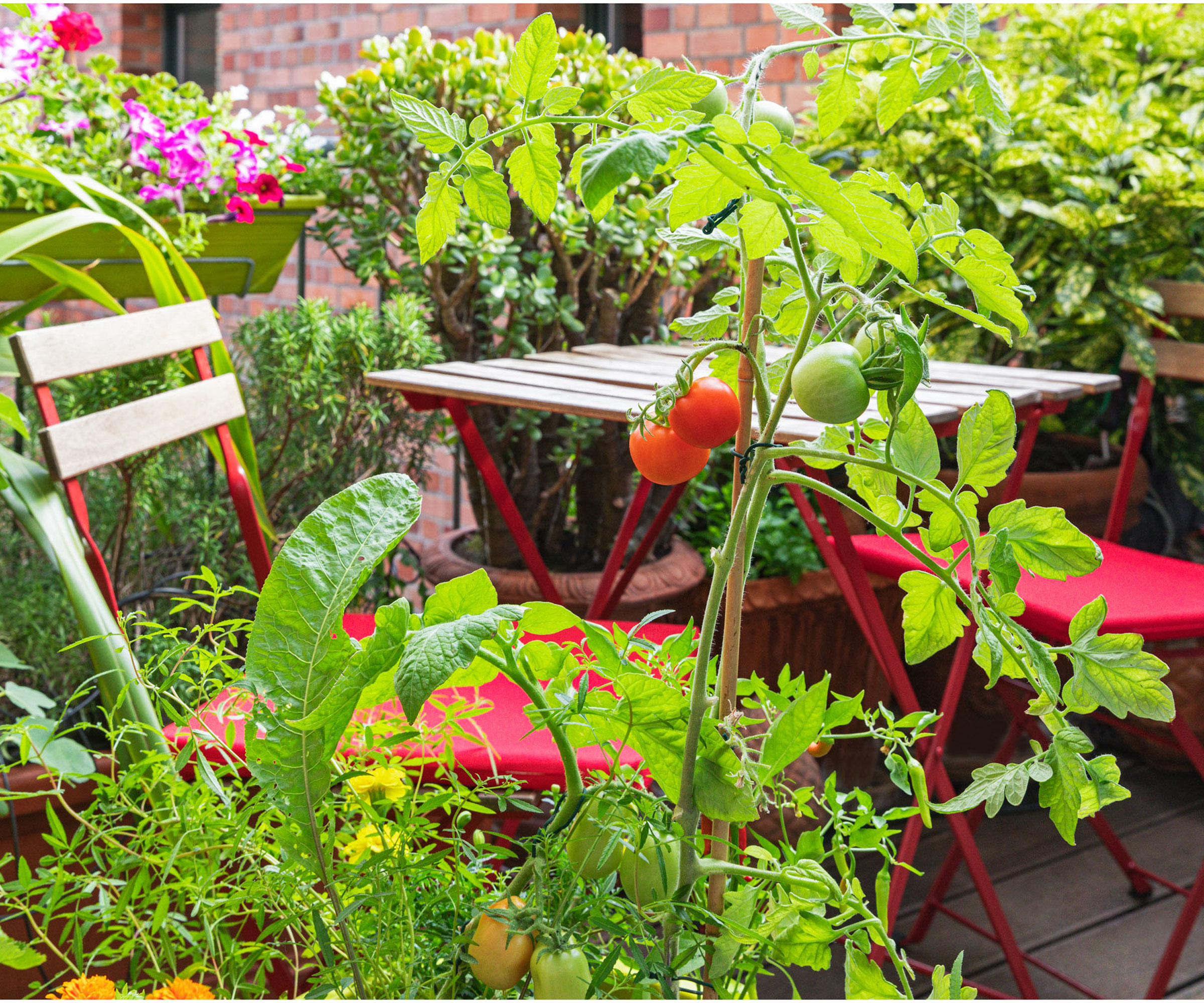
Before you start planting some trees, it is important to understand your site, its aspect and the soil type you will be growing on. This is because the fruiting and nut-producing trees that usually make up the sub-canopy layer prefer to be grown in full sun and if planted in too much shade, will struggle to produce impressive yields.
Furthermore, if your garden soil is shallow, any large trees will find it hard to develop deep roots and may fail to thrive or become unstable.
The pH of your soil is also significant, as if it is highly acidic, the range of plants and trees you will be able to successfully grow will be limited. If you are at all unsure, you can dig a hole to assess your soil depth and test the pH of the soil across the site using a pH meter such as this Garden Tutor Soil pH Test Kit from Amazon.
Once the site is assessed, you can begin to plan what you would like to grow. Starting with a variety of large trees and shrubs, you will want to ensure that their spacing is correct, that they will not grow too large for the area and that fruiting varieties are cross-compatible with others for pollination. Then, you can move on to planning the lower layers around the trees and shrubs.
It doesn’t matter if you don’t own a spare field that you can turn into a food forest, as a food forest can also be created on a small scale. Even a small backyard can provide enough room to create a layer or two of small trees and herbaceous perennials for you to enjoy a harvest from.
If space is further limited, you can simply incorporate as many layers as you have space for. For patio or balcony growing, you can grow plants in containers or pots such as this OYEAL Raised Garden Bed available from Amazon, and if height allows, create vertical elements by installing a trellis or DIY bamboo wigwams for climbing plants.
Along with food forests, gardeners are continuing to make their front and backyards more viable and are embracing sustainable ways of gardening. Composting garden and home waste, harvesting rainwater and encouraging wildlife into your garden are all ways that can help reduce waste and resources and boost biodiversity.
However, if you have the space, you may want to consider keyhole gardening as well, especially if you live in an area prone to drought or garden on poor soil. With a built-in central composting area, when watered, it irrigates and releases nutrients into the surrounding growing bed, reducing the need to use fertilizers and conserving water.
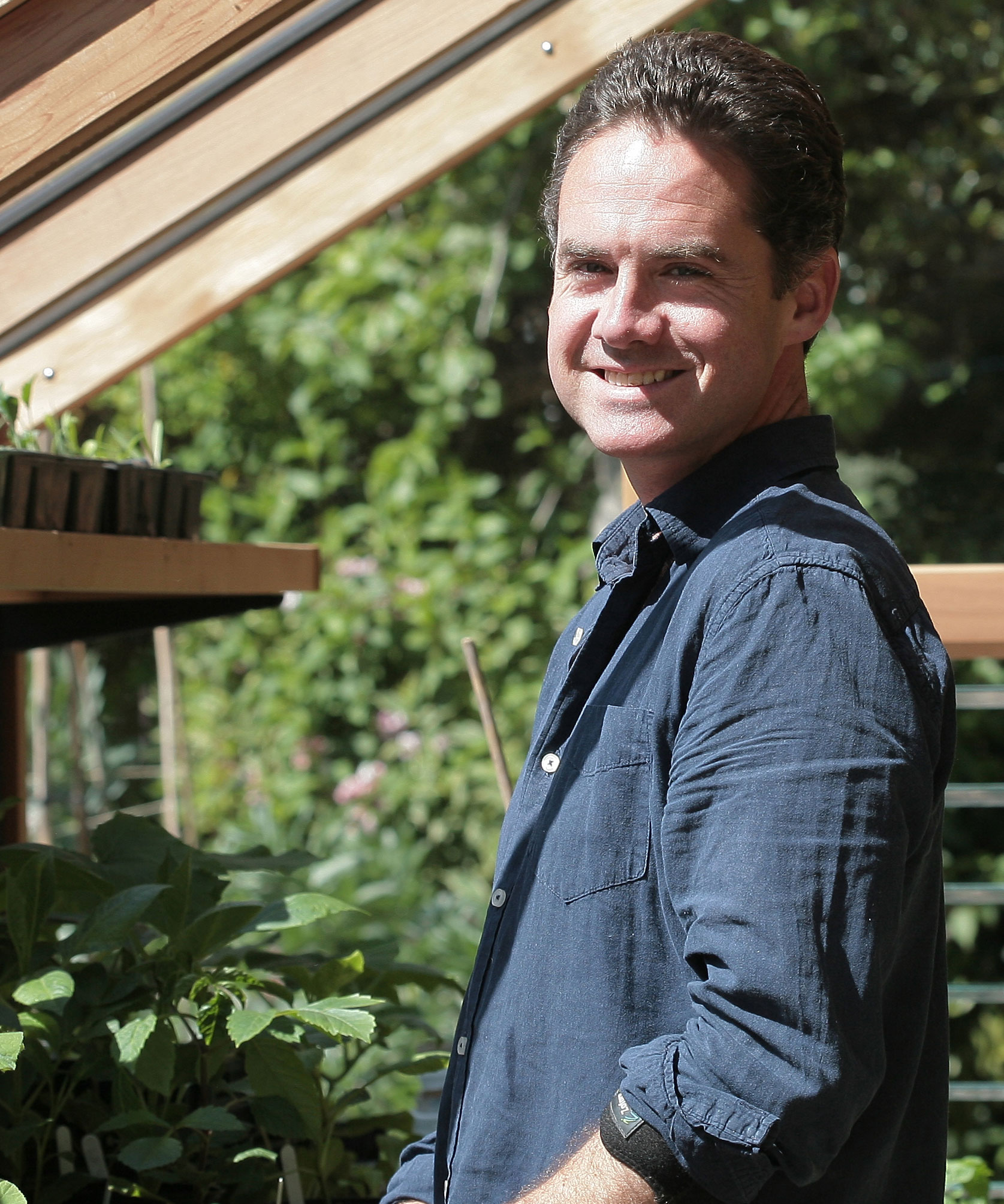
Edward Bowring is a horticultural therapist and writer with a passion for gardening and the health benefits that it has to offer. With a background in occupational therapy, Edward worked within health care settings where he witnessed first-hand the healing power of gardening and has managed and run therapeutic kitchen and community gardens ever since.
You must confirm your public display name before commenting
Please logout and then login again, you will then be prompted to enter your display name.